STUDENTS PROJECTS
PROJECTS2013
20 December, 2014
re-N.E.W. the PRISON
The key issue of this diploma thesis is the prison system.
Student : Maria Prodromou
Supervisors: Maria Filokyprou, Panayiota Pyla, Christos Papastergiou
School of Architecture, University of Cyprus
Presentation date : May 2014
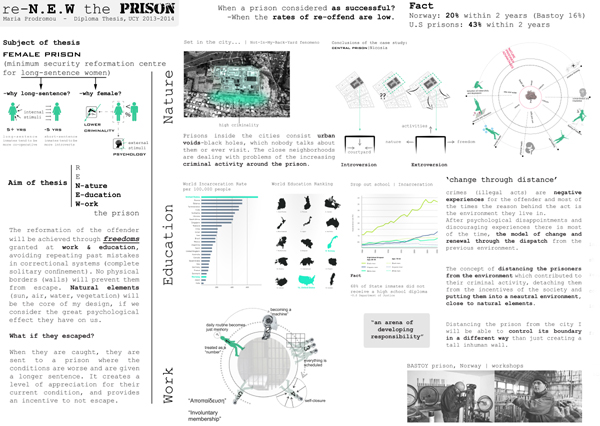
Theoretical Investigation.
‘The degree of civilization in a society can be judged by entering its prisons'
Fyodor Dostoevsky
‘Memoirs from the House of the Dead'
The key issue of this diploma thesis is the prison system. The aim of this thesis is to propose a new scheme that includes and redefines the terms Nature, Education and Work within the design, three concepts that are to be used as tools that aid the correction and synergy needed for a smoother reintegration of inmates back into society.
The proposal has as a goal the development of a building complex that is intended for long-sentence and life-long-sentence women inmates, whose correction will be achieved through a liberal system, which will provide certain freedoms in the educational and working fields, motivating the inmates to develop additional elements such as co-operation, responsibility and initiative that will help them in their life after they are released. In this way, the repetition of past solitary systems, with all of their negative impact, will be avoided. Furthermore the element of nature will be at the core of the concept since it offers numerous advantages, according to studies of the department of psychoneuroimmunology.
The specific triptych (nature-education-work) came about after a comparative analysis of successful prison examples in Norway and of less successful ones in New York focusing on the designing factors that contributed to this. At the same time, through an interdisciplinary approach in the sectors of psychology and sociology the environment in which the inmates act and live and the subsequent emotions and reactions they develop were analysed.
When, is a prison considered successful? Surely a prison has accomplished its role within society when the rate of re-incarceration of the released inmates is low. A comparison of the studied examples shows US reaching 43% in two years, while 20% for Norway. Furthermore, the term ‘involuntary membership', which was coined, in sociology, by Erving Goffman, refers to the loss of the existing education of a person, as a being who is able to socialize and his gradual lack of initiative when it comes to his daily routine. This occurs because the schedule which they are asked to follow in prison is characterized by strict standards, without the ability of an inmate to change it, while everything is given to them without requiring their own effort. Consequently, the proposal considers the inmates' personal insertion in their daily programme significant and that is why it has given them the chance to have plenty of work activities and in the recreational level as well.
Additionally, through the research of prisons located inside the urban fabric, it has been shown that many people consider them as black holes on cities' maps or urban voids, because they are complexes with strictly distinct boundaries, without accessibility for safety reasons and with a huge planning area. Therefore, distancing the prison from the city, the proposal will be able to manage its boundaries in a different way, avoiding the creation of an enormous impersonal wall. Another significant problem cities face because of the prisons is the region of increased criminality that is created outside the ring of the boundary-wall, by people friends/ partners of the convicts, members of illegal groups, who are trying to reach their own people that may be inside and equipping them with drugs or carry out other illegal activities.
As an ideal answer to the above theoretical investigations is the choice of locating the prison complex on the island Yeronisos, 300 meters from the coast of St. George in Peyia Paphos and which rises 21.65 meters above sea level. At the top of the island, after some excavations, some antiquities have been found, which have never been used and are not considered an archaeological destination, since the island is far too difficult to reach. Thus, it has been decided to integrate in the present proposal a public path of observation of the ancient remains in combination with some view points for observing Lara's bay in the north and the Coral Bay in the south region. This route will have controlled access and will be open to the public on selected days and hours, on condition that the prisoners will not be in this area, but according to their timetable will be elsewhere. Access to the island will be by boat from the small fishing port that exists in the area.
The architectural proposal is expressed by two main routes , that is to say two axes of movement that have been loaded with the two programmatic proposals, that of the public path and that of the prison. The axis of the prison is developed on three levels in section. The building program is divided into three main units, the most public concerning the administrative areas of staff and visitors, the most private which includes the cells of prisoners and in the end the section of common activities and areas exclusively for prisoners, which are private and not visited by the public. The route through antiquities remains at the top level of the island, along with administrative buildings, which are at a lower level in order to keep the ridge terrain relatively unaffected in the eye of the visitor. The cells, spaces of personal living are sited on the slope of the cliff with a shift in plan for the optimal use of internal effects of sunlight and a view to the sea, while the part of the activities is on a floating platform, in direct relation to the water and is inaccessible in the evening, as the access to it is cut off.

Location and Accesibility.
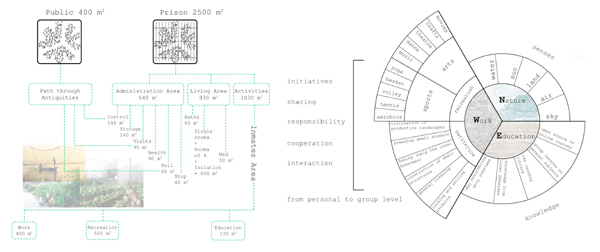
Programme.

Concept Development.
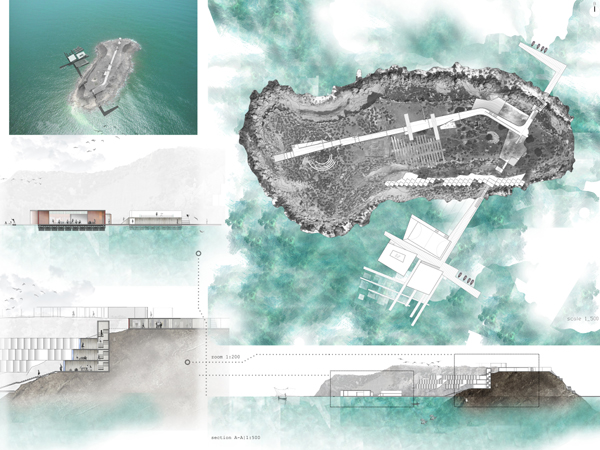
Masterplan.
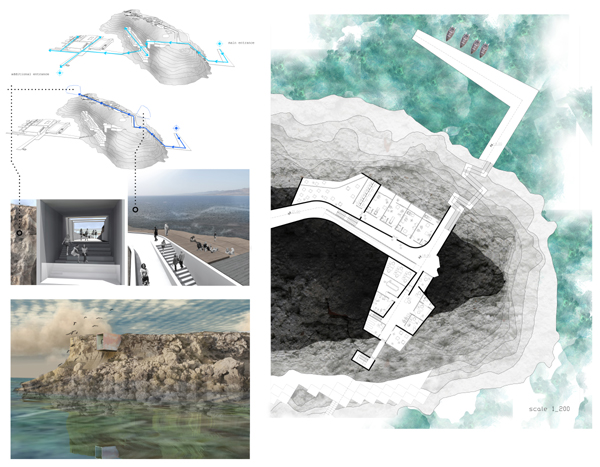
Zoom A into the Masterplan.
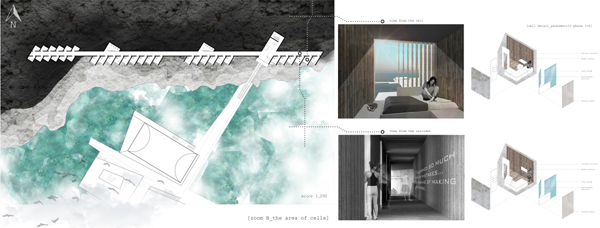
Zoom B into the Masterplan.
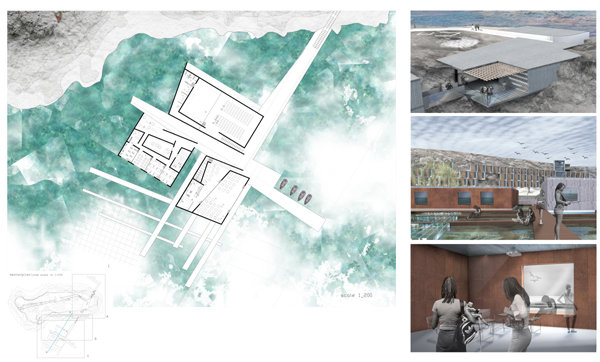
Zoom C into the Masterplan.
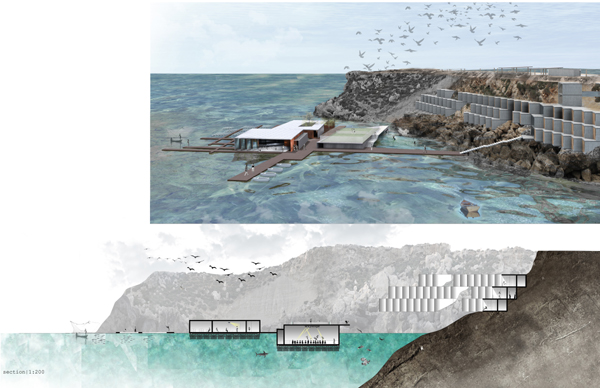
Section and 3D representation.
Related articles:
- Penitentiary architecture ( 23 February, 2011 )
- A different physical layout of prison facilities ( 29 September, 2012 )
- PRISON-OFF. Juvenile Detention Center ( 26 May, 2015 )
- Alternative correctional facility in Volos ( 05 June, 2015 )
- Women’s jail precint ( 25 June, 2015 )










